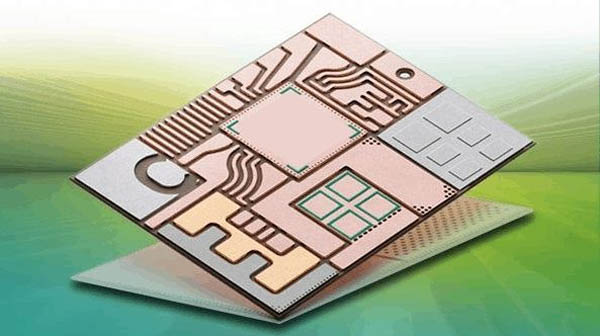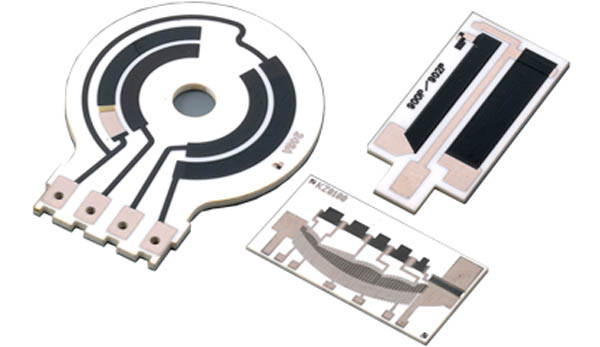About us
FASTPCBA Co.,Ltd
-
 Building 1, Senyang Electronic Technology Park, Guangming High-tech Park, Yutang Street, Guangming District, Shenzhen City.
Building 1, Senyang Electronic Technology Park, Guangming High-tech Park, Yutang Street, Guangming District, Shenzhen City.
-
 F:86-13418481618
F:86-13418481618
-
 [email protected]
[email protected]
 date:2020-12-25 17:02:16
date:2020-12-25 17:02:16
1. Why use ceramic circuit board
Ordinary PCB is usually made by bonding copper foil and substrate, and the substrate material is mostly glass fiber (FR-4), phenolic resin (FR-3) and other materials, and the adhesive is usually phenolic, epoxy, etc. In the PCB processing process, due to thermal stress, chemical factors, improper production technology, etc., or due to the asymmetric copper paving on both sides during the design process, it is easy to cause the PCB board to warp to different degrees.

And another kind of PCB substrate-ceramic PCB board, due to the heat dissipation performance, current carrying capacity, insulation, thermal expansion coefficient, etc., are much better than ordinary glass fiber PCB board, so it is widely used in high-power power electronic modules, Aerospace, military electronics and other products.

The copper foil and the substrate are bonded together with the ordinary PCB using an adhesive. The ceramic PCB is bonded together by bonding the copper foil and the ceramic substrate in a high temperature environment. The bonding force is strong. The copper foil Will not fall off, high reliability, stable performance under high temperature and high humidity environment.
2. The main material of ceramic PCB board
* Alumina (Al2O3)
Alumina is the most commonly used substrate material in ceramic PCB boards, because compared to most other oxide ceramics in terms of mechanical, thermal, and electrical properties, it has high strength and chemical stability, and is rich in raw materials. It is suitable for a variety of Technical manufacturing and different shapes. According to the percentage of alumina (Al2O3), it can be divided into: 75 porcelain, 96 porcelain and 99.5 porcelain. The content of alumina is different, its electrical properties are hardly affected, but its mechanical properties and thermal conductivity vary greatly. The low-purity substrate has more glass phases and large surface roughness. The higher the purity of the substrate, the smoother, denser, and the lower the dielectric loss, but the higher the price.
* Beryllium Oxide (BeO)
It has a higher thermal conductivity than metal aluminum and is used in applications requiring high thermal conductivity. The temperature drops rapidly after the temperature exceeds 300°C, but its toxicity limits its development.
* Aluminum Nitride (AlN)
Aluminum nitride ceramics are ceramics with aluminum nitride powder as the main crystal phase. Compared with alumina ceramic PCB board, it has higher insulation resistance, insulation withstand voltage and lower dielectric constant. Its thermal conductivity is 7-10 times that of Al2O3, and its coefficient of thermal expansion (CTE) is approximately matched to that of silicon wafers, which is essential for high-power semiconductor chips. In the production process, the thermal conductivity of AlN is greatly affected by the content of residual oxygen impurities, and reducing the oxygen content can significantly increase the thermal conductivity. At present, the thermal conductivity of the current process production level reaches 170W/(m·K) or more is no problem.
Based on the above reasons, it can be known that alumina ceramics is still in a leading position in the fields of microelectronics, power electronics, hybrid microelectronics, and power modules due to its superior comprehensive performance.
3. Advantages and disadvantages of ceramic PCB boards
Advantage:
* Large current carrying capacity, 100A current continuously passes through 1mm0.3mm thick copper body, and the temperature rise is about 17℃; 100A current continuously passes through 2mm0.3mm thick copper body, and the temperature rise is only about 5℃;
* Better heat dissipation performance, low thermal expansion coefficient, stable shape, not easy to deform and warp.
* Good insulation, high pressure resistance, to ensure personal safety and equipment.
* Strong bonding force, using bonding technology, the copper foil will not fall off.
* High reliability, stable performance under high temperature and high humidity environment
Disadvantage:
* Fragile, this is one of the most important shortcomings, which leads to only a small area of the circuit board.
* The price is expensive, and there are more and more requirements for electronic products. Ceramic circuit boards are still used in some relatively high-end products, and low-end products are not used at all.
4. The use of ceramic PCB board
* High-power power electronic modules, solar panel components, etc.
* High frequency switching power supply, solid state relay
* Automotive electronics, aerospace, military electronics
* High-power LED lighting products
* Communication antenna, car ignition
5. Ceramic PCB board display


 Building 1, Senyang Electronic Technology Park, Guangming High-tech Park, Yutang Street, Guangming District, Shenzhen City.
Building 1, Senyang Electronic Technology Park, Guangming High-tech Park, Yutang Street, Guangming District, Shenzhen City.
 F:86-13418481618
F:86-13418481618
 [email protected]
[email protected]